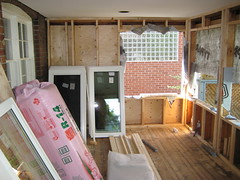They’ve flip-flopped on the issue more often than a presidential candidate in a primary debate. If you’re a little confused about what you can or can’t deduct, you’re not alone. Hopefully this will help.
First, in order to claim this credit, any improvements must be made to an existing home and it must be your main residence. This means that landlords and new home builders are out of luck on this one.
The credit is smaller than before. If you did improvements in 2011, the credit is 10% of the cost of the improvements and it caps at $500. Some credits, like windows, are capped at an even lower amount.
There’s also a lifetime limit on the credit so if you received an energy tax credit anytime between 2006 through 2010 then your 2011 energy tax credit will be reduced by that much.
Excuse me for a moment while I rant and rave. The IRS says on its website that you should keep your tax records for 3 years. But for this case, the IRS is expecting you to go back through 5 years worth of information to see if you claimed a credit back in 2006? This is crazy. Nobody’s tax software has carried forward that information because it was never a carry forward issue until now. This tax credit is kind of a “Thanks, but no thanks,” kind of deal. Gee it’s nice that they extended it and all, but it’s really going to be a pain in the *#$. I’m expecting a lot of IRS “gotchas” with this credit and I think “gotchas” are morally wrong.
Okay, back to business now. The bottom line is, if you’ve claimed $500 worth of energy tax credits at any time over the past 5 years, don’t try to claim any more. Make sure you check (because the IRS most certainly will). The form you’re dealing with is Form 5695. I don’t have a link to the 2011 form yet.
Also, if you’ve zeroed out your taxable income, this credit is “non-refundable” which means it’s only a credit against your tax liability, if you owe no tax, this credit won’t help you.
Another thing is the whole “Energy Star” issue. You’ll want to make sure that the improvements that you make on your home qualify under the “Energy Star” program. Here’s a link to their website: http://www.energystar.gov/index.cfm?c=tax_credits.tx_index. But it’s important to remember that just because you buy something that has an Energy Start label doesn’t mean that you’ll qualify for a tax credit. I had a couple of clients last year who brought in receipts and Energy Star labels but it was for things that didn’t qualify for the tax credit.
If you need to install insulation or storm windows, go ahead and do the work. Do what’s right for your home and family. If you manage to qualify for a tax credit for it, great, but don’t count on receiving that tax credit as you calculate your expense of the project. There are a lot of land mines you have to step over to get to it.

